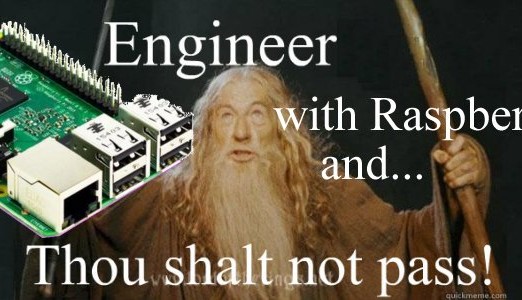Thou Shalt Think Things Thru All the Way
November 11, 2016
on
on

The Raspberry Pi is a great little board to quickly build a prototype with. Cheap and widely available it is supported by numerous libraries, programs & programming languages, and even operating systems and/or flavours. Because of this well-developed ecosystem – as we call things like that today – many makers choose it as the heart of the prototype for the product they want to build and, when ready, put on the market.
The way a typical maker pictures it is as follows. Based on the prototype and market research a retail price is established and a business plan is drawn up. The product is to be introduced gradually, and so a first batch of, say, 1,000 pieces will be produced. When almost sold out a second batch, of course larger than the first because the product is going to be successful, will be launched, and then a third, larger than the second, etc. If you look this maker closely in the eye you will probably see dollar or euro signs.
But there is an unexpected snag in this scenario that he will soon uncover: what to do with the Raspberry Pi he embraced so lovingly at the start of his dream? Although the RPi is inexpensive, for most products it is not practical to use as is. Too big (especially when an extension bord is used), not the right shape, too large connectors or not the right ones, etc. What is often needed is a customised version of the RPi, without the stuff that has no function in the end product. And this is where the dark clouds start to gather.
Slimming down a Raspberry Pi, in itself not an easy exercise, is expensive. A custom RPi will cost much more money than the RPi itself because of the large volumes the latter is produced in. The prototype is actually cheaper than the final product can ever be, unless it is produced in huge quantities for which there is no money and no demand (yet), and all the calculations on which the business plan was based turn out to be wrong and up in smoke goes the dream. Our enthusiastic maker will have to start all over again, but this time with a platform that is realistic for his future product.
In short, think before you start (dreaming).
The way a typical maker pictures it is as follows. Based on the prototype and market research a retail price is established and a business plan is drawn up. The product is to be introduced gradually, and so a first batch of, say, 1,000 pieces will be produced. When almost sold out a second batch, of course larger than the first because the product is going to be successful, will be launched, and then a third, larger than the second, etc. If you look this maker closely in the eye you will probably see dollar or euro signs.
But there is an unexpected snag in this scenario that he will soon uncover: what to do with the Raspberry Pi he embraced so lovingly at the start of his dream? Although the RPi is inexpensive, for most products it is not practical to use as is. Too big (especially when an extension bord is used), not the right shape, too large connectors or not the right ones, etc. What is often needed is a customised version of the RPi, without the stuff that has no function in the end product. And this is where the dark clouds start to gather.
Slimming down a Raspberry Pi, in itself not an easy exercise, is expensive. A custom RPi will cost much more money than the RPi itself because of the large volumes the latter is produced in. The prototype is actually cheaper than the final product can ever be, unless it is produced in huge quantities for which there is no money and no demand (yet), and all the calculations on which the business plan was based turn out to be wrong and up in smoke goes the dream. Our enthusiastic maker will have to start all over again, but this time with a platform that is realistic for his future product.
In short, think before you start (dreaming).
Read full article
Hide full article


Discussion (2 comments)